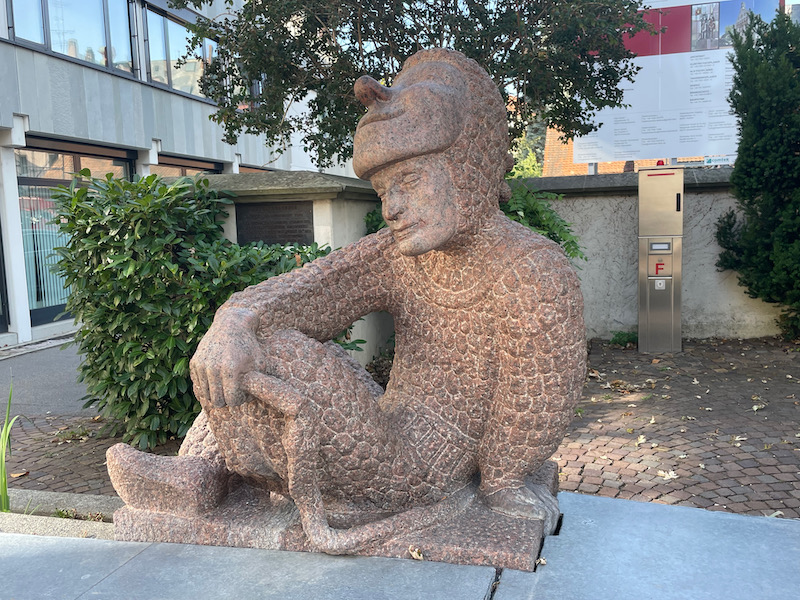Our Blog - Germany 2023 - Weingarten, Germany
The name of the town of Weingarten literally translates to "wine garden", so you can imagine that they do a bit of wine production there :-) But it wasn't always that way. The name was changed in 1865 ... before that, the town was named Altdorf, which referenced the local parish church. It is relatively old, with excavations at a burial area dating to the 5th century. The Weingarten Abbey, established in 1056, was one of the wealthiest monasteries in Southern Germany until it was confiscated during secularization in 1803.
A bit of trivia: Erwin Rommel, the famous German field marshal, known as the Desert Fox, was stationed here as a 20-year-old when several military barracks were located here.
The Abbey Church of St. Martin and Oswald is the largest Baroque church north of the Alps. It was built in the early 1700s, replacing a Romanesque church that was built in 1056. The exterior is less impressive than the interior, looking more like a palace or government building than a church.
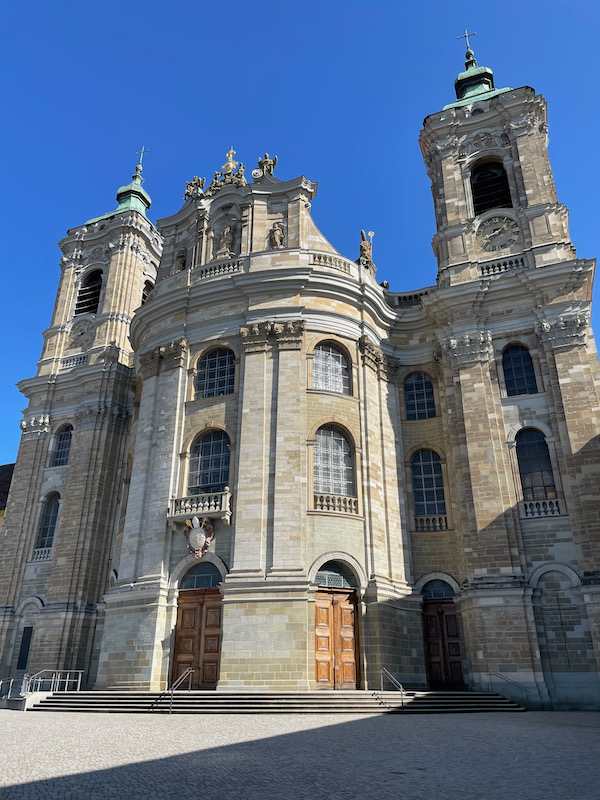
The doors are HUGE! And once you go through these doors, there is a small vestibule and another set of large doors, the interior ones a bit more elaborate than the exterior ones.
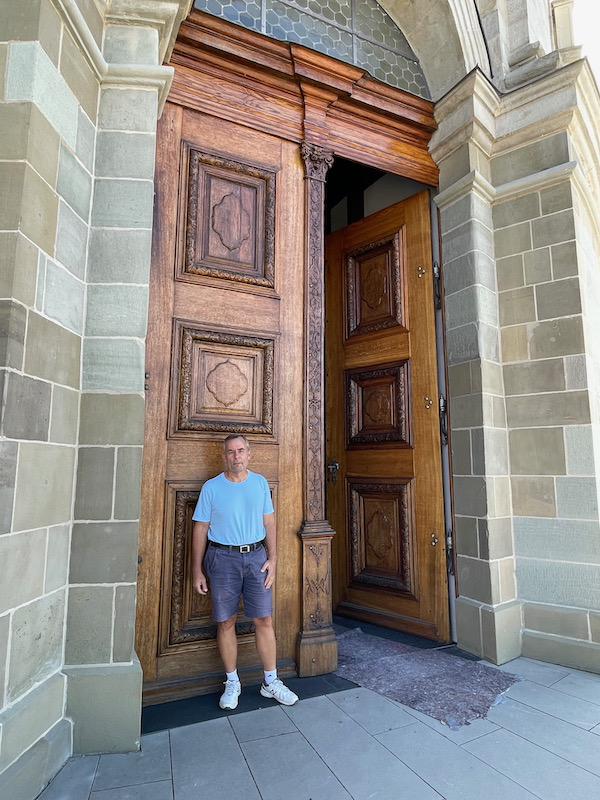
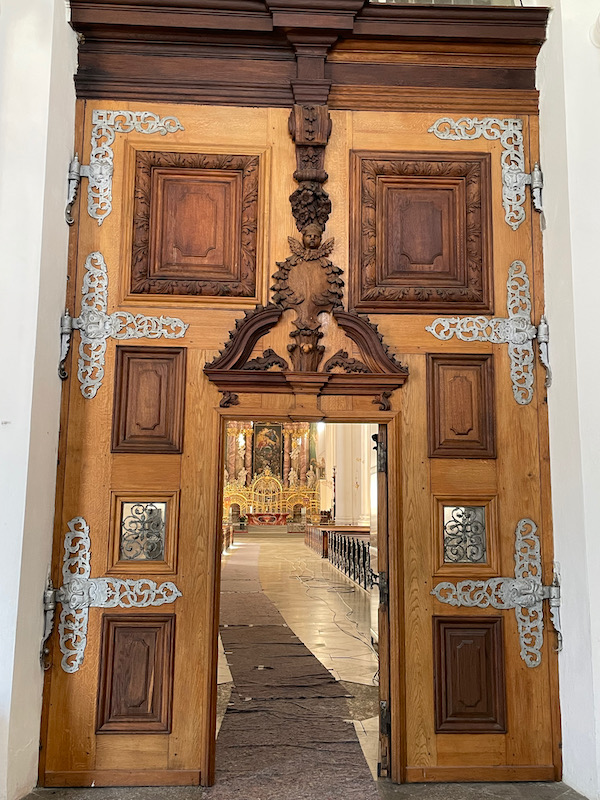
Once inside, you are struck by the contrast of the very white and simple walls and the ornately sculpted and frescoed ceilings, which were painted between 1718 and 1720. There was a bit of work going on, with the scaffolding covered by this semi-reflective sheet that you can see in the pictures.
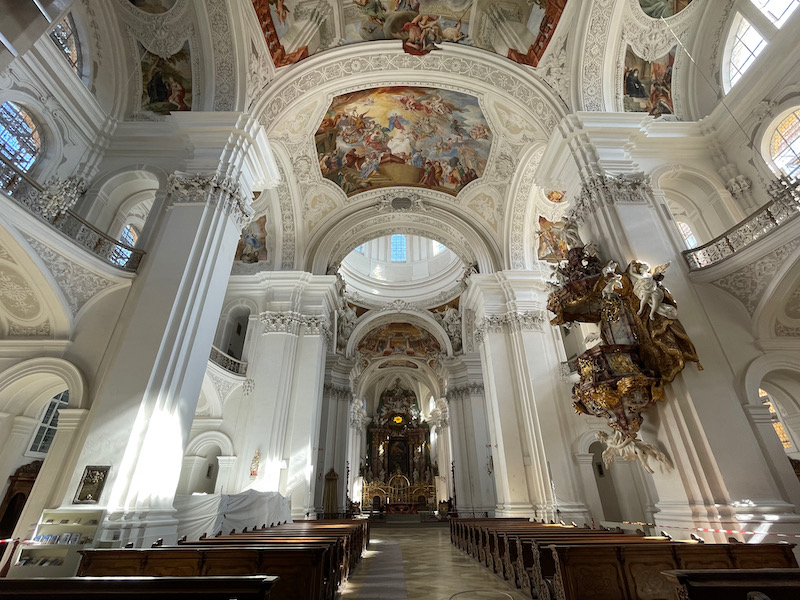
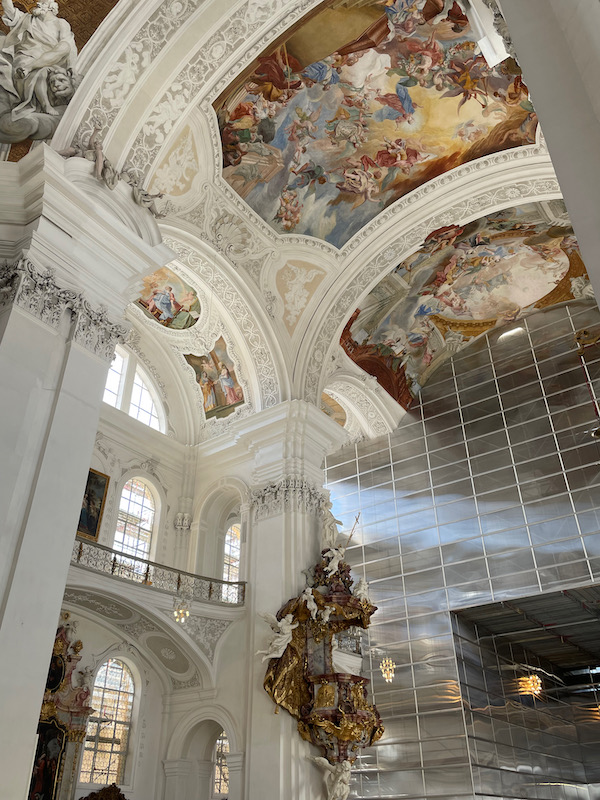
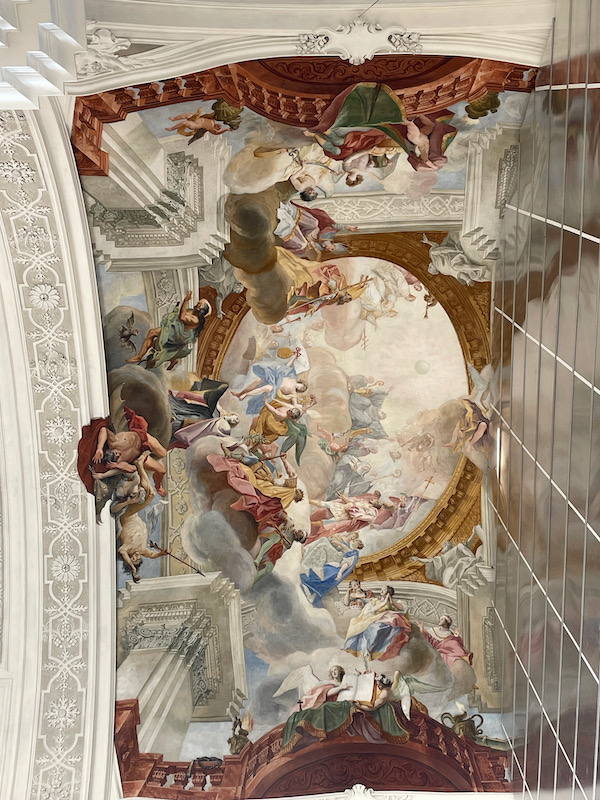
The pews, which normally are pretty plain, here are also carved. The choir stalls date to 1720-1724. An interesting thing here is, you can see the organ just above the choir stalls, where normally it is placed at the back of the church on a higher floor. This is called a "choir organ", where the organ is placed in the middle of the choir, with the pipes located on both sides above the choir stalls.
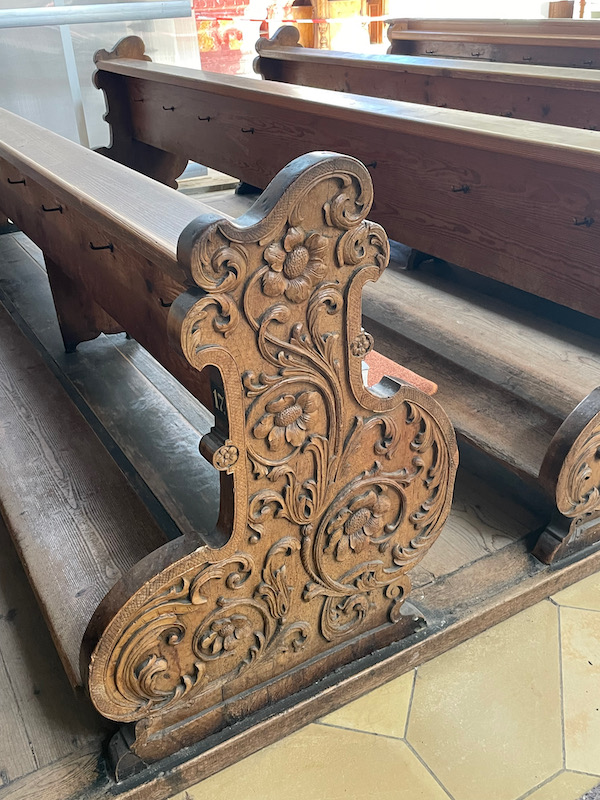
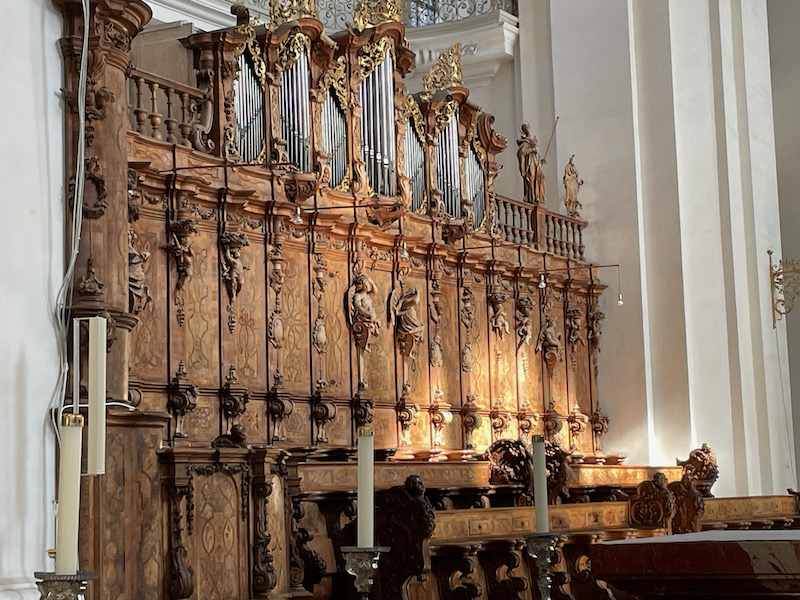
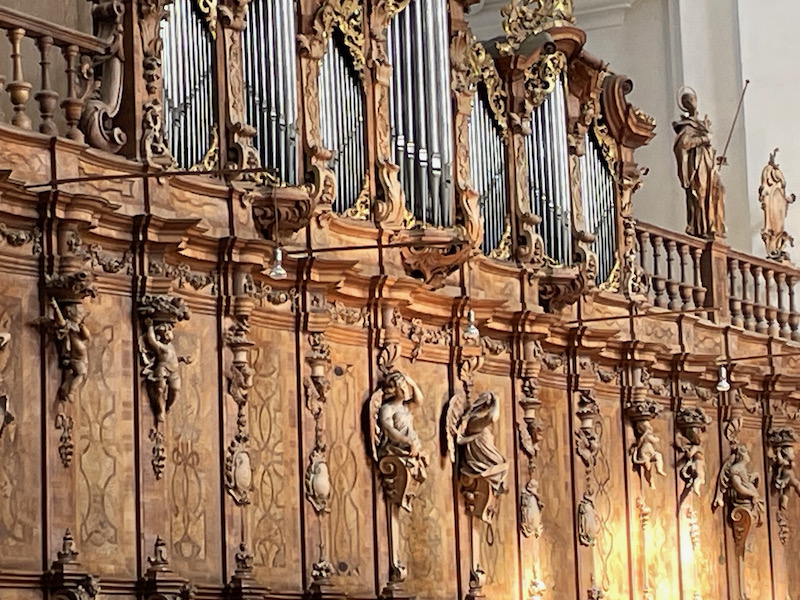
Dotted around the church are various altars and a preaching pulpit, all of which you can see are very colorful and very Baroque in style. The first altar you see below is that of the Crucification altar.
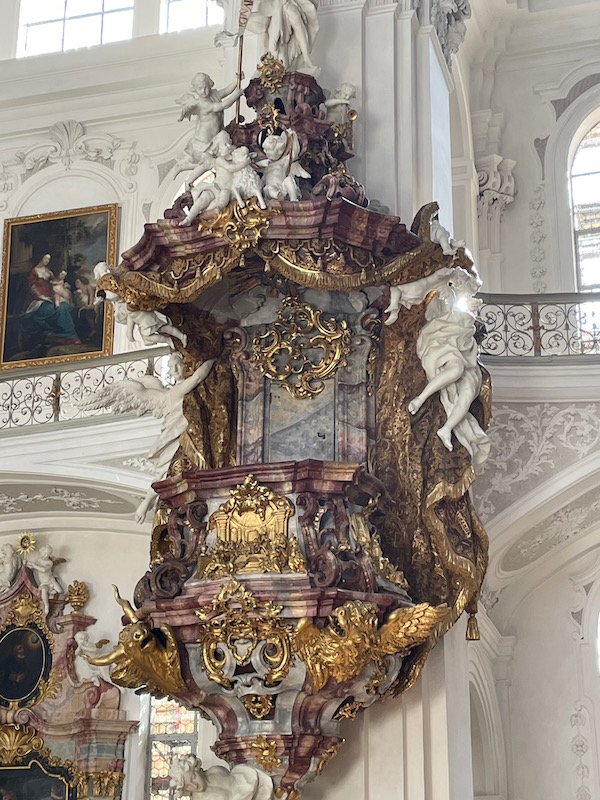
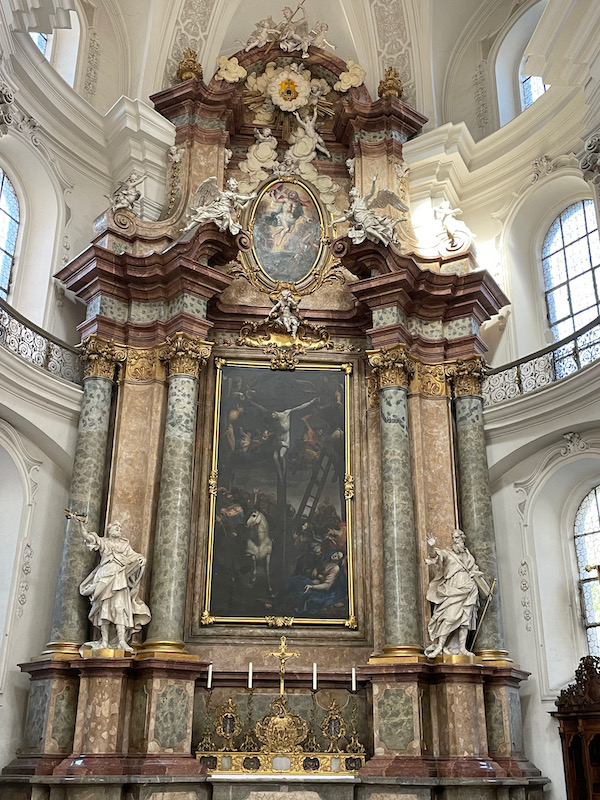
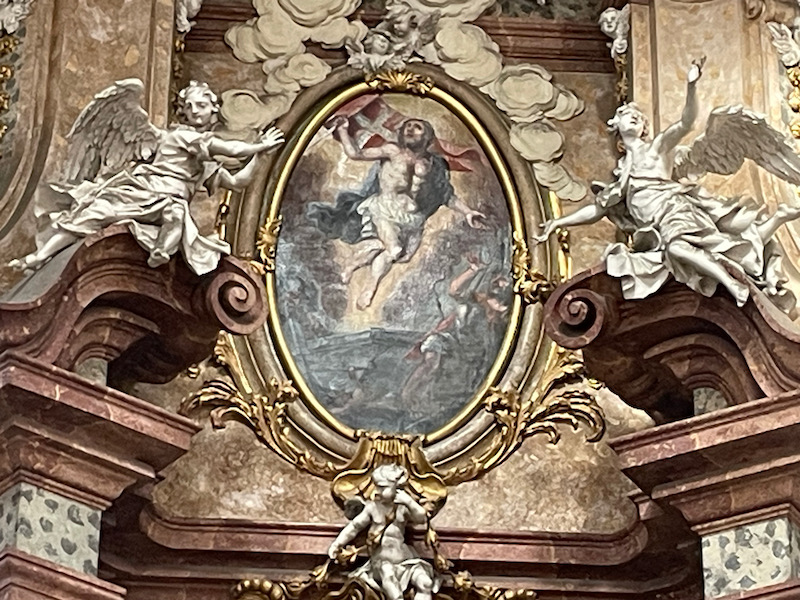
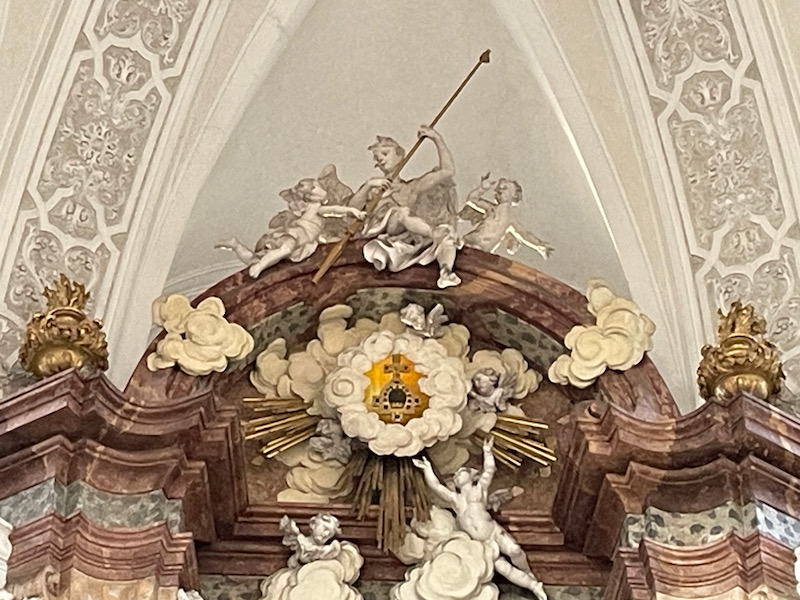
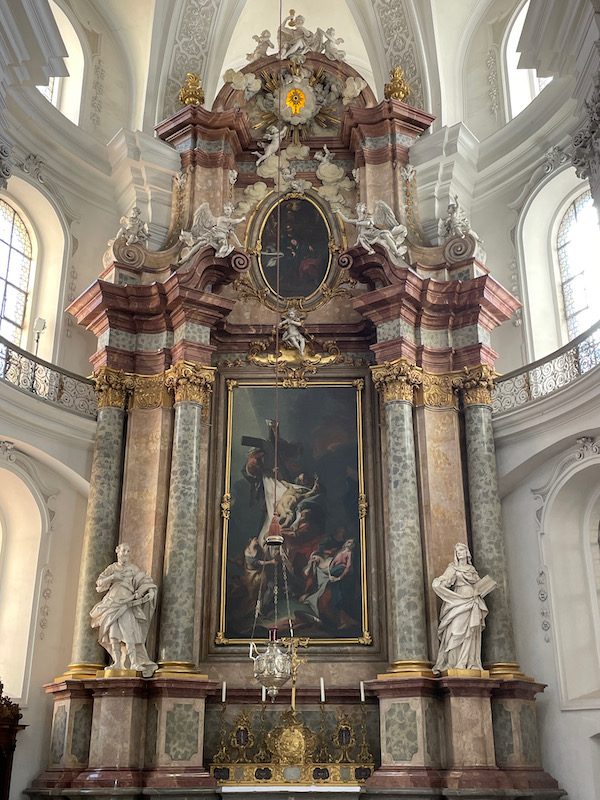
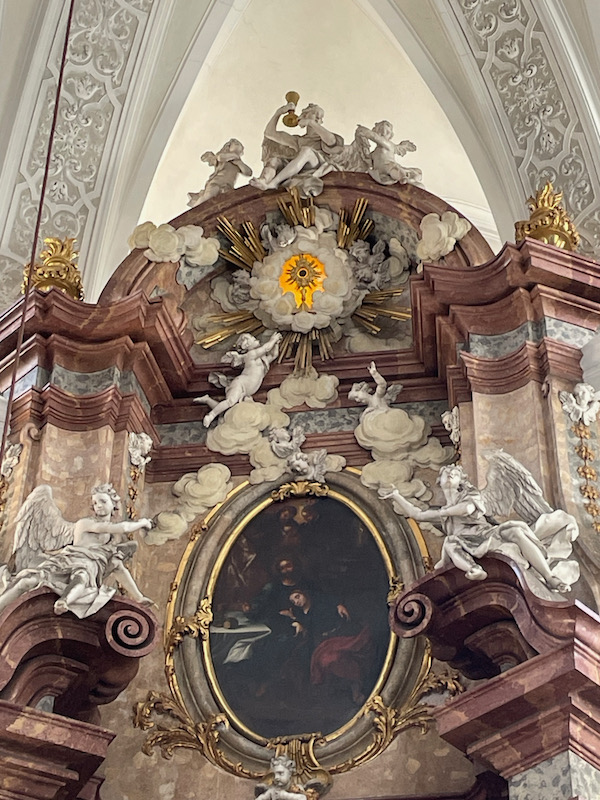
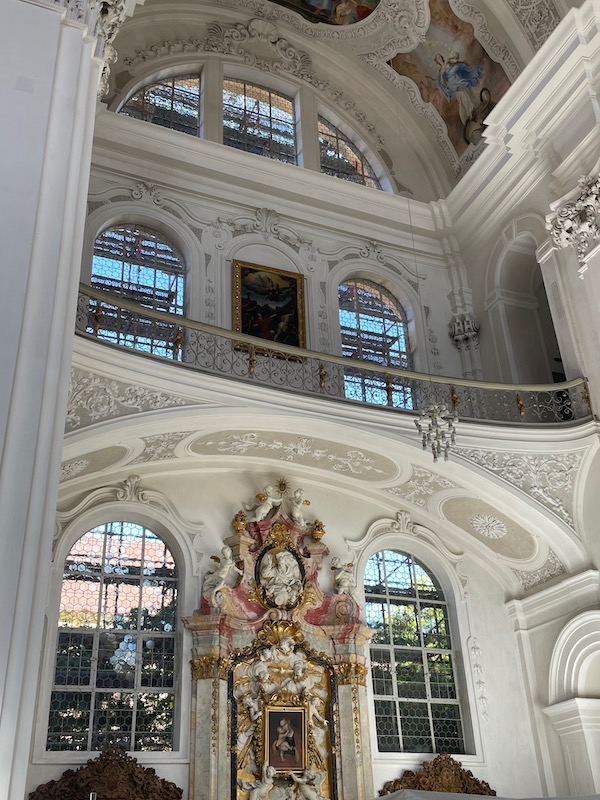
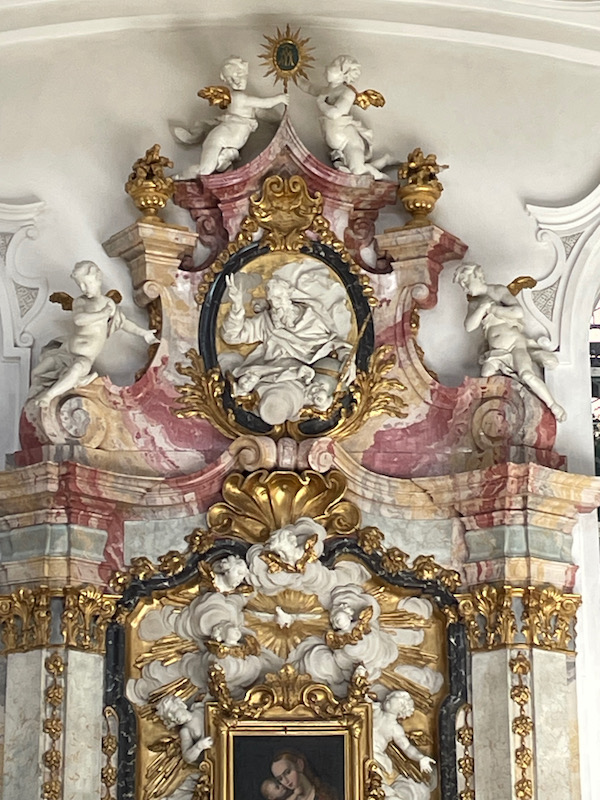
And finally, the main altar. You can see the choir stalls and organs on each side, and then a gold gate. Behind that is the main Baroque altarpiece. The last picture is that of the fresco that is in the domed ceiling above the choir.
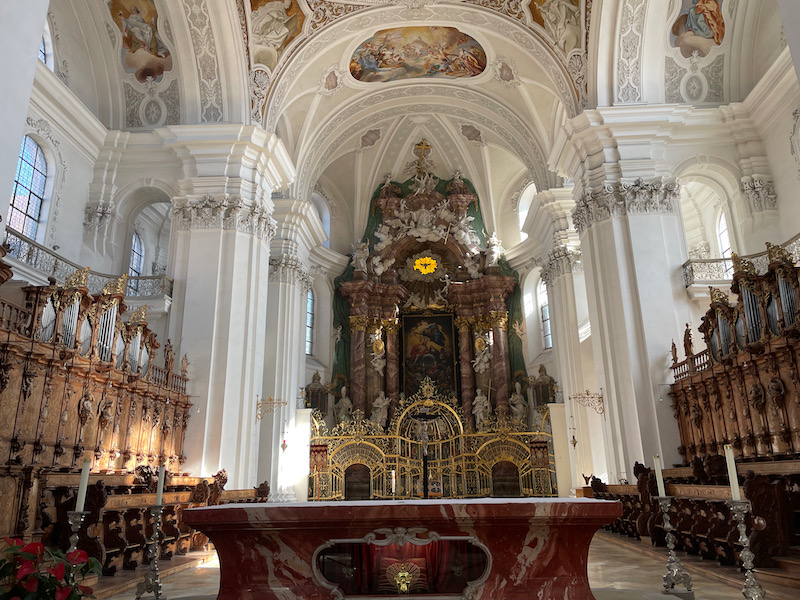
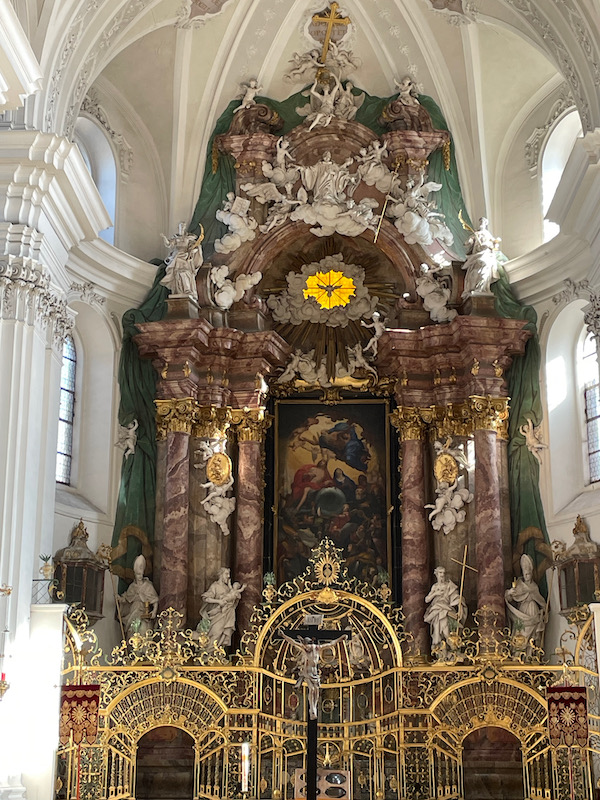
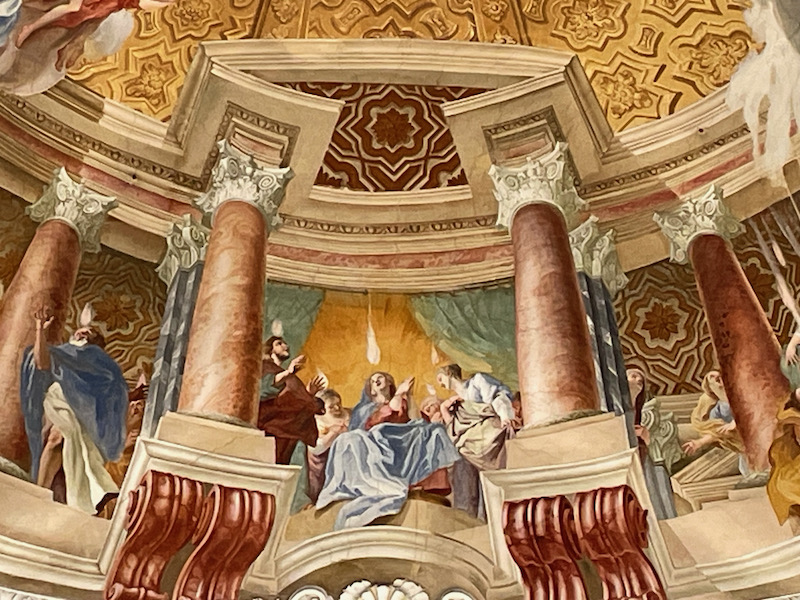
I mentioned that there was work going on ... several of the side chapels were covered and we could see a bit of the work that was being done. Here, you can see the workers redoing the tiles and a little further on, I could see where it looked like they were laying something underneath ... either electrical cables or underfloor heating (not sure exactly what it was).
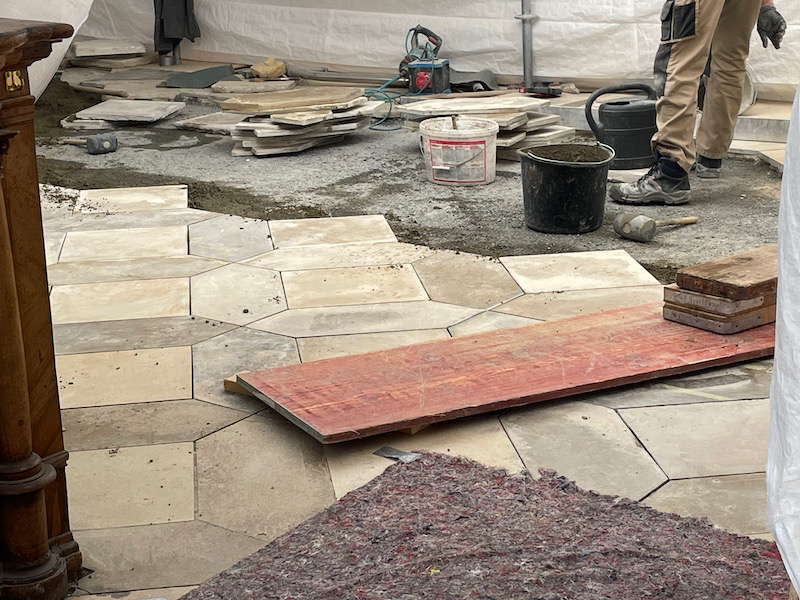
This is the Town Hall on Rathausplatz. Formerly the landscape house of the deputies of the bailiwick, it is decorated with a figure of St. Konrad and a fresco on the Guelph legend by Maria Eberhard.
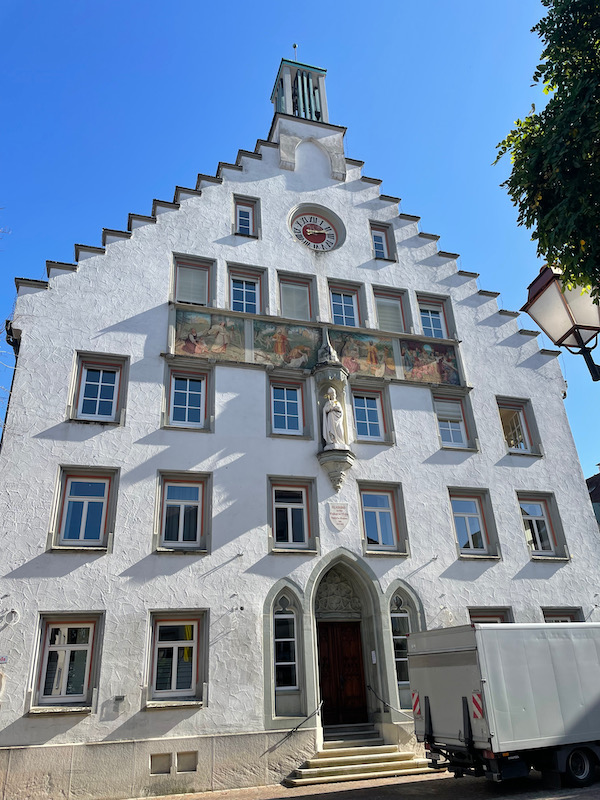
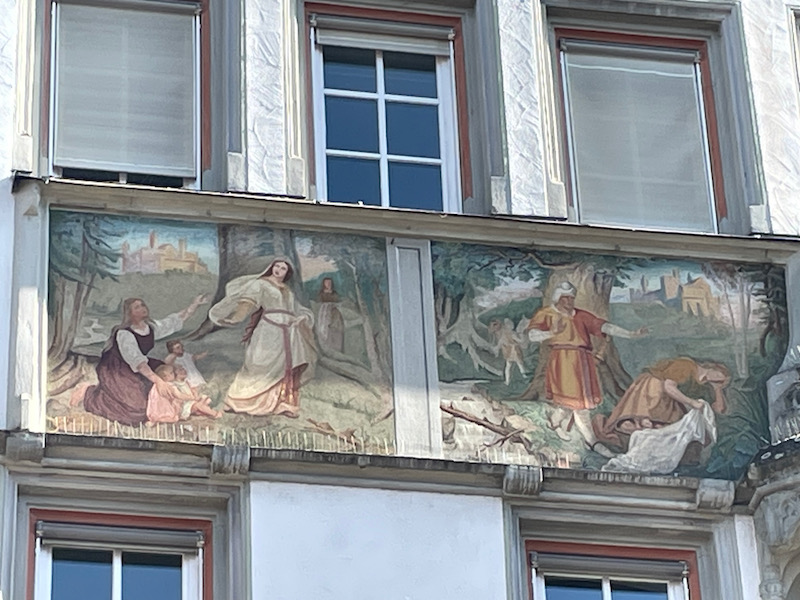
Another lovely metal store sign, this one for the Kornhaus cafe/museum, dating from 1621.
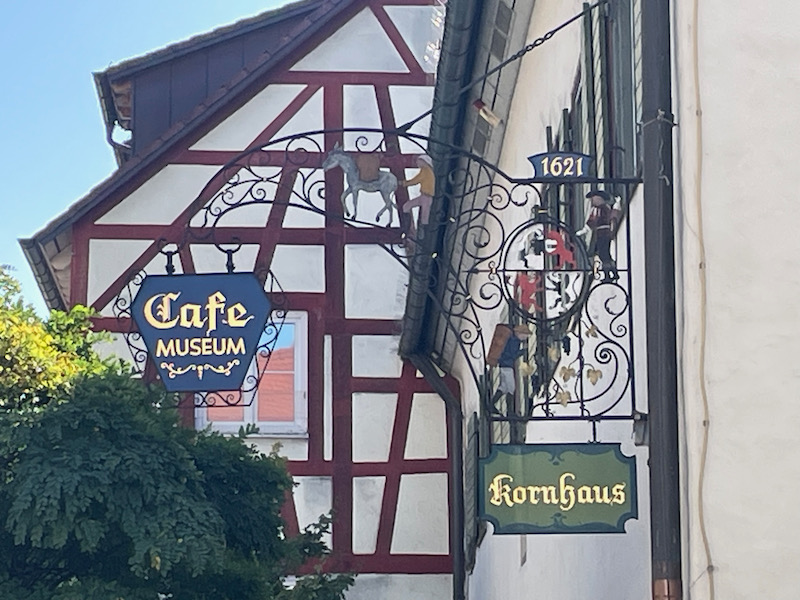
For centuries, Weingarten has been an importation station on the Way of Saint James. This an interesting statue that is a reminder of the pilgrimage tradition here.
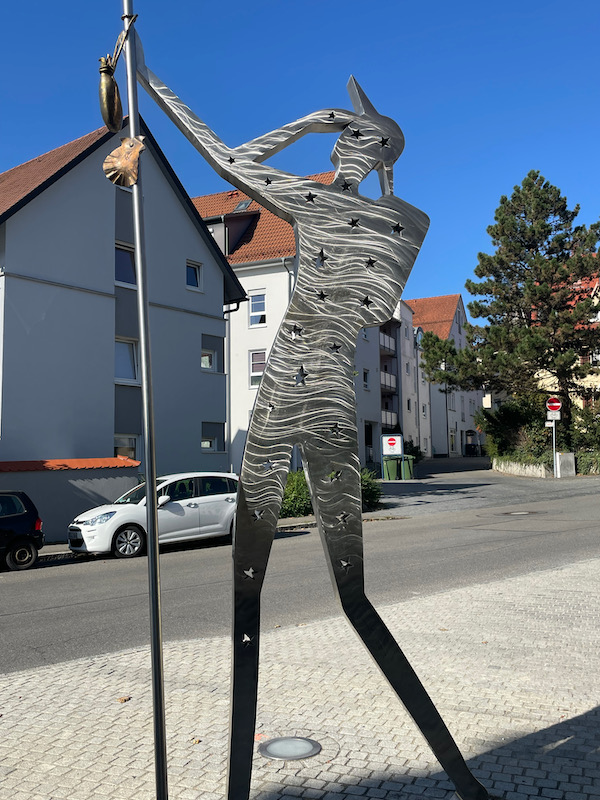
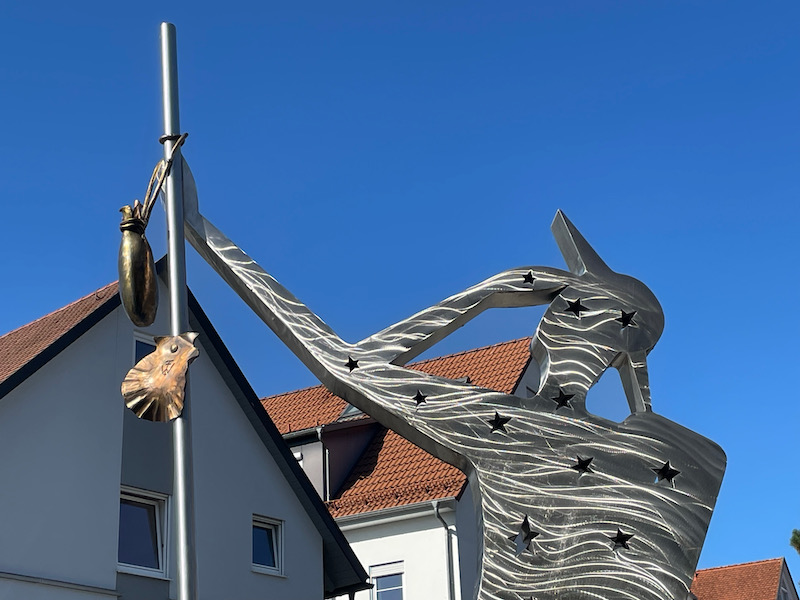
The Schlössle was built around 1550 as the administrative seat of the Lower Austrian Swabian bailiwick in the Renaissance style. In the 18th century, it was the residence of the imperial district judges and the rich baroque stucco work dates from this period. It then was used as a residential building for officers before being turned into the town museum in 2001.
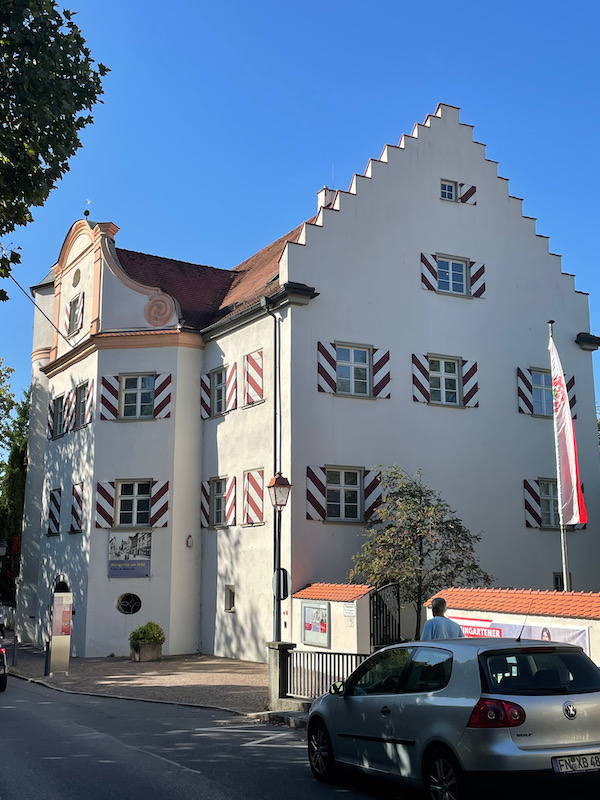
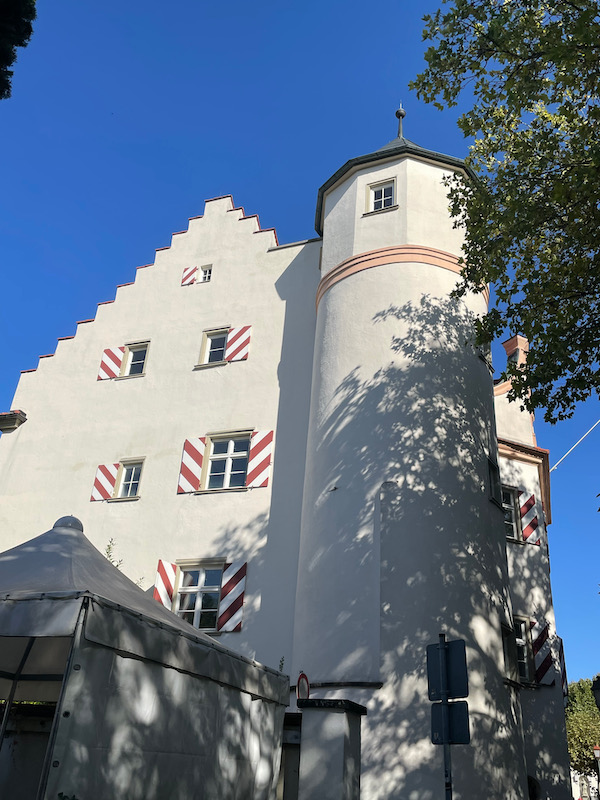
This little guy is part of the Plätzlerbrunnen, or Plätzler fountain. There is a Plätzler guild, which somewhat translates to a "Fool" or "Jester guild, and is part of a legend of jesters dancing around the town hall after surviving the bubonic plague. The Plätzler is the main character of the guild and he wears a so-called Fleckleshäs, which is a suit that consists of 5,000-7,000 felt patches, a knotted belt with an individual motif, and a wooden mask.
